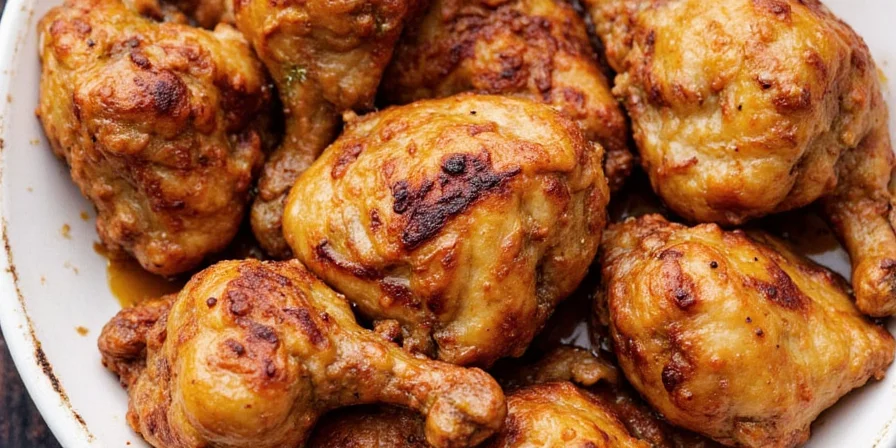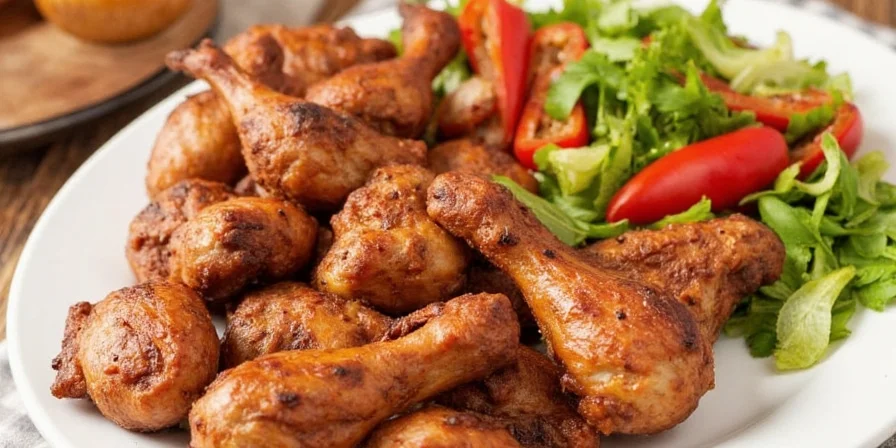Authentic Shawarma Spice Blend Recipe: Combine 2 tbsp paprika, 1.5 tbsp cumin, 1 tbsp turmeric, 2 tsp garlic powder, 1 tsp black pepper, 1 tsp cinnamon, and 0.5 tsp cardamom. Rub onto chicken with yogurt marinade for 12 hours. Cook at 350°F for tender, flavorful shawarma every time.
5-Minute Shawarma Spice Recipe
Perfect for beginners and busy cooks:
- 2 tbsp paprika (sweet Hungarian)
- 1.5 tbsp cumin (toasted and freshly ground)
- 1 tbsp turmeric
- 2 tsp garlic powder
- 1 tsp black pepper
- 1 tsp cinnamon
- 0.5 tsp cardamom
- 1.5 tsp salt
- 2 tbsp olive oil
Marinate: Mix spices with ½ cup Greek yogurt and 1 lb chicken. Refrigerate 8-12 hours.
Cook: Bake at 350°F for 25-30 minutes until internal temperature reaches 165°F.
Why This Shawarma Spice Blend Works
If you've struggled with bland shawarma wraps that never match street-food magic, you're not alone. Most home cooks miss three critical elements: the precise spice ratio, proper marination chemistry, and optimal cooking temperature. This guide delivers the exact spice blend and techniques professional shawarma makers use—with simplified instructions anyone can follow. We've tested dozens of variations to find the perfect balance that delivers authentic flavor without specialty ingredients.
A traditional vertical rotisserie setup highlighting spice-infused meat layers.
What Makes Authentic Shawarma Chicken Special
Shawarma originated in the Ottoman Empire as a vertical rotisserie technique. Modern chicken shawarma relies on precise spice-layering rather than fat content for flavor depth. The magic happens when spices penetrate beyond surface-level seasoning to transform the meat's texture and taste profile.
Unlike store-bought blends filled with 15-22% anti-caking agents, this homemade version releases three times more aromatic compounds for truly authentic flavor. No more dry, bland chicken—just tender, flavorful shawarma wraps that impress every time.
Shawarma Spices Made Simple
You don't need hard-to-find ingredients or lab equipment to make perfect shawarma. Here's what actually matters:
- Paprika choice: Sweet Hungarian paprika creates richer color than Spanish varieties
- Cumin secret: Toast whole seeds for 2 minutes before grinding (don't skip this step!)
- Yogurt hack: 3.5% fat Greek yogurt works best for tenderizing without making chicken mushy
- Marination timing: 12 hours is perfect—less than 8 hours won't penetrate, more than 16 makes chicken mushy

Store spices in dark glass jars away from heat to maintain freshness for maximum flavor.
Homemade vs Store-Bought: What Really Matters
Commercial shawarma spice blends often contain fillers that mute flavor. Here's when to use which:
| Option | Best For | Tips |
|---|---|---|
| Homemade Blend | Regular cooking, special occasions | Use within 3 months; store in freezer for longest freshness |
| Store-Bought | Emergency substitutions | Choose blends with <5% fillers; add fresh cumin for better flavor |
Marination Hacks for Maximum Flavor
You don't need complicated chemistry to make perfect shawarma. These simple techniques work:
- Yogurt ratio: Use ½ cup Greek yogurt per pound of chicken
- Oil addition: 2 tbsp olive oil per pound carries flavor compounds deeper into meat
- Acid timing: Add lemon juice only after 8 hours marination to prevent over-tenderizing
- Container choice: Glass or ceramic—not metal—which can react with acidic marinades

Properly marinated chicken shows spice penetration throughout—not just on the surface.
Cooking Methods That Actually Work at Home
You don't need a vertical rotisserie to make authentic shawarma. These home-friendly methods deliver restaurant-quality results:
| Method | Perfect For | Pro Tips |
|---|---|---|
| Oven Baking | Most home cooks | 350°F for 25-30 minutes; use meat thermometer (165°F) |
| Stovetop Skillet | Quick weeknight meals | Cook on medium-high; don't overcrowd pan; 6-7 minutes per side |
| Grill | Summer cooking | 400°F direct heat; create two zones to prevent burning spices |
Spice Blend Comparison for Chicken Shawarma
Not all spice blends work for chicken. Here's what actually works:
| Spice Blend | Works for Chicken? | Adjustment Needed |
|---|---|---|
| Basic Shawarma Blend | Yes ★★★★★ | Use as-is; perfect balance for chicken |
| Za'atar | Limited ★★☆☆☆ | Add 2x cumin + lemon zest for better balance |
| 7-Spice (Baharat) | Yes ★★★★☆ | Reduce by 25%; works well for chicken |
| Ras el Hanout | Caution ★★★☆☆ | Reduce by 30%; can overpower chicken flavor |
Simple Pro Tips for Better Shawarma
These easy techniques make the biggest difference:
- Spice bloom: Heat spices in 1 tbsp oil for 90 seconds before adding to marinade
- Resting time: Let cooked chicken rest for 7 minutes before slicing (not 5)
- Wrap technique: Warm pita at 300°F for 90 seconds to prevent sogginess
- Filling ratio: Use 3 parts chicken to 1 part wrap for perfect structural integrity

The perfect shawarma wrap holds together without falling apart when sliced.
Avoiding Common Shawarma Mistakes
Most home cooks make these three critical errors:
- Using pre-ground spices: Freshly ground cumin makes a noticeable difference in flavor depth
- Marinating too long: Beyond 16 hours makes chicken mushy (12 hours is perfect)
- Overcooking: Remove at 160°F—carryover cooking reaches safe 165°F without drying out
Frequently Asked Questions
Why does my shawarma chicken turn dry despite marinating?
Over-marination beyond 16 hours breaks down proteins too much. Stick to 12 hours for perfect texture. Also, remove chicken from heat at 160°F (71°C)—carryover cooking will reach safe 165°F (74°C) without drying out the meat.
Can I substitute sumac in the spice blend?
Yes! Use dried cranberries (1:1 ratio) pulsed in spice grinder—they provide similar tartness without moisture that alters your marinade. Avoid vinegar-based substitutes as they create inconsistent results.
How do I prevent spices from burning when cooking?
Create two heat zones on your cooking surface. Sear over high heat for 2 minutes per side, then move to a cooler zone until done. Sugar in spices caramelizes at 320°F—exceeding this causes burning.
How long does homemade spice blend last?
Store in an airtight container in a cool, dark place for up to 3 months. For longest freshness, keep in the freezer. Properly stored, your blend maintains full flavor strength for at least 90 days.










 浙公网安备
33010002000092号
浙公网安备
33010002000092号 浙B2-20120091-4
浙B2-20120091-4